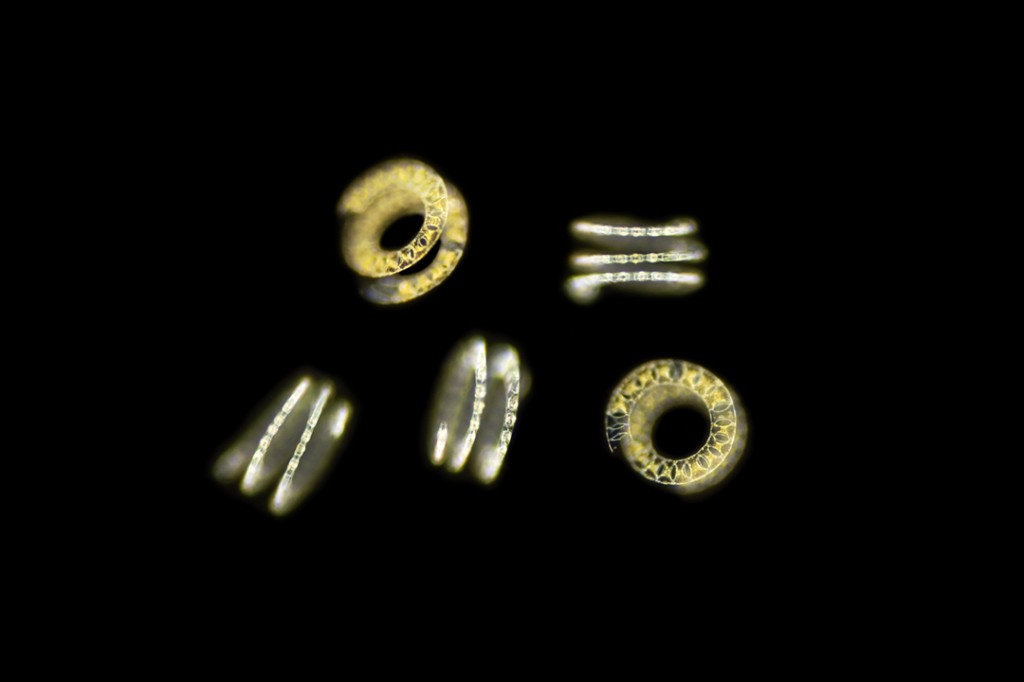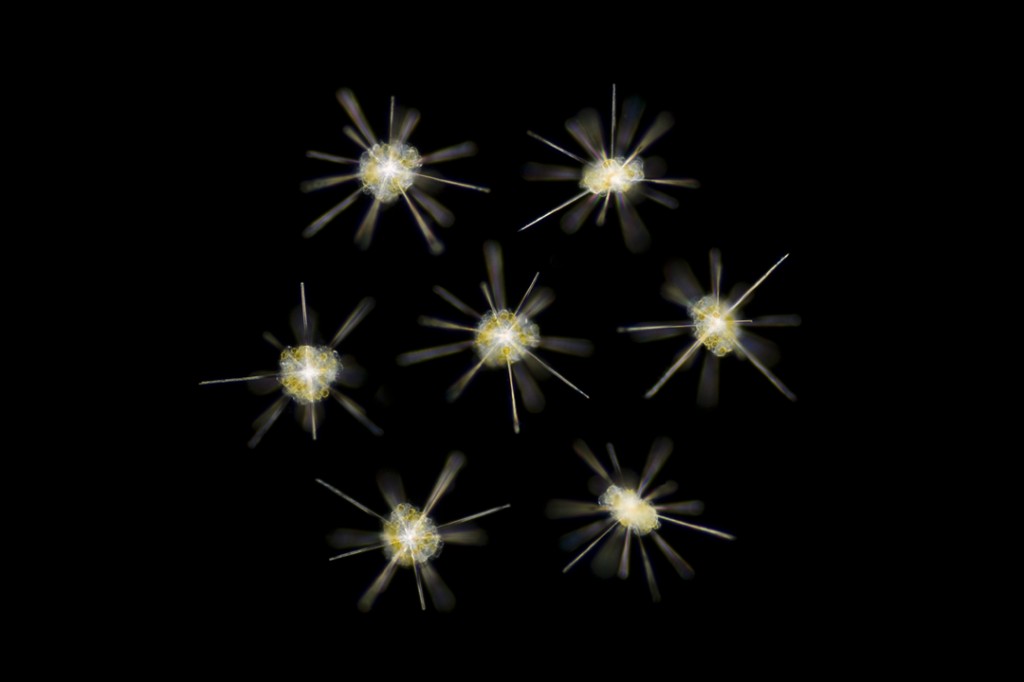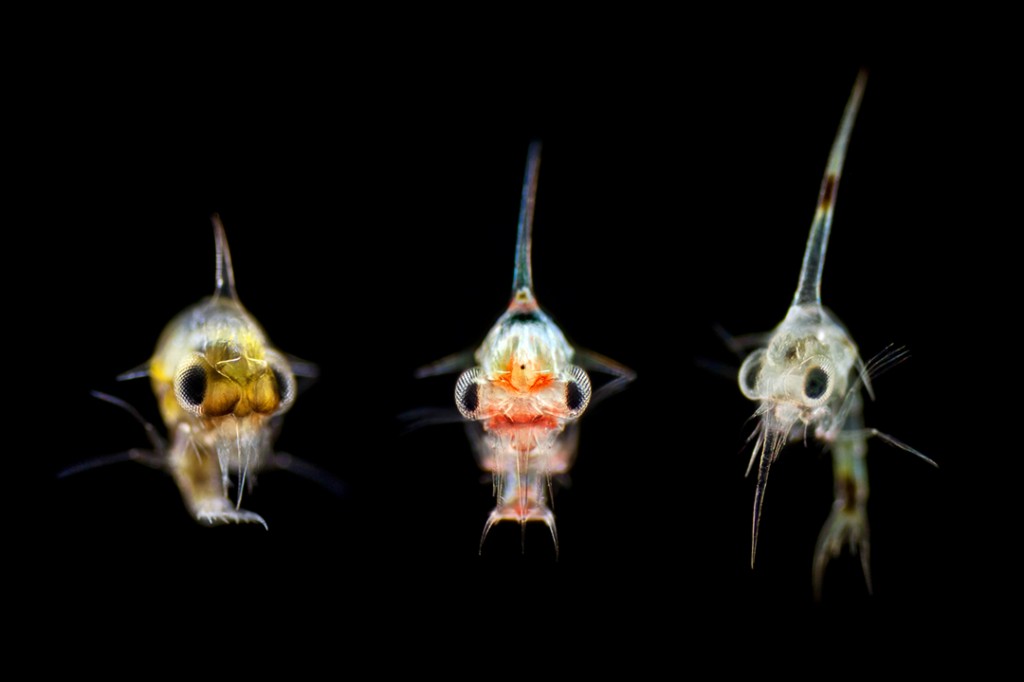Seawater is a soup of incredibly gorgeous and intricate creatures with sometimes titillating, baroque, or improbable lifestyles. And as it turns out, part of what’s in that soup is these guys. These three cuties are all crab larvae — from left to right, the zoea larva of the spider crab Maja squinado, the angular crab Goneplax rhomboides, and the thumbnail crab Thia scutellata. Mr.(Ms.) Thia looks like the adorable spawn of something you’d find torturing St. Anthony or in a Hieronymus Bosch painting (or both).
Regardless, they are way cute, and if you can believe it, said fellow(gal) at right will one day (predation permitting) turn into this. As Dr. Kirby points out, many crabs, mussels, barnacles and worms that live on the sea floor as adults send their larvae out into the plankton to feed, grow, and drift on currents to new homes. This works great if your offspring are legion and can therefore withstand the blistering assault of predators mining the plankton for food.
These beautiful photographs are the works of Dr. Richard Kirby, whose work I highlighted earlier this year here. He has put together a collection of plankton that reminded him of Christmas. So since I have done zero holiday decorating at home, I’ll spruce up the blog a bit with photographs Dr. Kirby kindly gave me permission to reproduce.
Here are “Five Gold Rings” — spiral chains of the diatom Eucampia zodiacus. Notice the gorgeous, lacy details of the spans, which are gold because there are tiny symbiotic photosynthetic phytoplankton inside called zooxanthellae.

And here’s one other favorite, the protozoan Acantharea.

I have covered diatoms before here, but not Acantharea or their larger group. Though Kirby compares them to fireworks, I see ornaments, which you can see too in Ernst Haeckel’s predictably gorgeous print here. They are radiolarians, amoeboid (yay!) protozoa that make intricate mineral skeletons. Acantharea‘s are somewhat improbably made of strontium sulfate — the mineral celestine, in keeping with our holiday theme — of all things. The acanthareans are currently classifed (probably not for long, as soon as the molecular people get their hands on them*) by their spine arrangement in a complex, and somewhat sadistic fashion that only a geometer could love.
For the full 12 Days of Plankton, go see a nice article with all the photos in the Daily Mail here, or a composite of slides here. He has just published a book of his photographs with descriptions, which I have not laid hands on or looked in yet, so cannot yet vouch for, called “Ocean Drifters: A secret world beneath the waves“. Though I cannot vouch for the book, I can definitely vouch for the subject.
I’ll have a few more posts before the 25th, but until then, early Merry Holidays.
________________________________________________
*Molecular people will classify them based on their relatedness as shown by DNA studies, not their outward appearance. Sometimes outward appearance is an accurate gauge of true relatedness, and sometimes you end up with whale and fish (aka convergent evolution).



{ 3 comments… read them below or add one }
“prawn!”
love those rings! and little ms. thia :)
Lovely pictures, especially the crab larvae. I’ve just bought Richard Kirby’s book and it’s a delight. When you get it, check out the Tomopteris, the sea angels and the echinopluteus …. awesome!
Great — Thanks for the feedback on the book! Good to hear from a fellow enthusiast. By the way — I love your blogs! I’m adding both of them to my Blogroll. : )